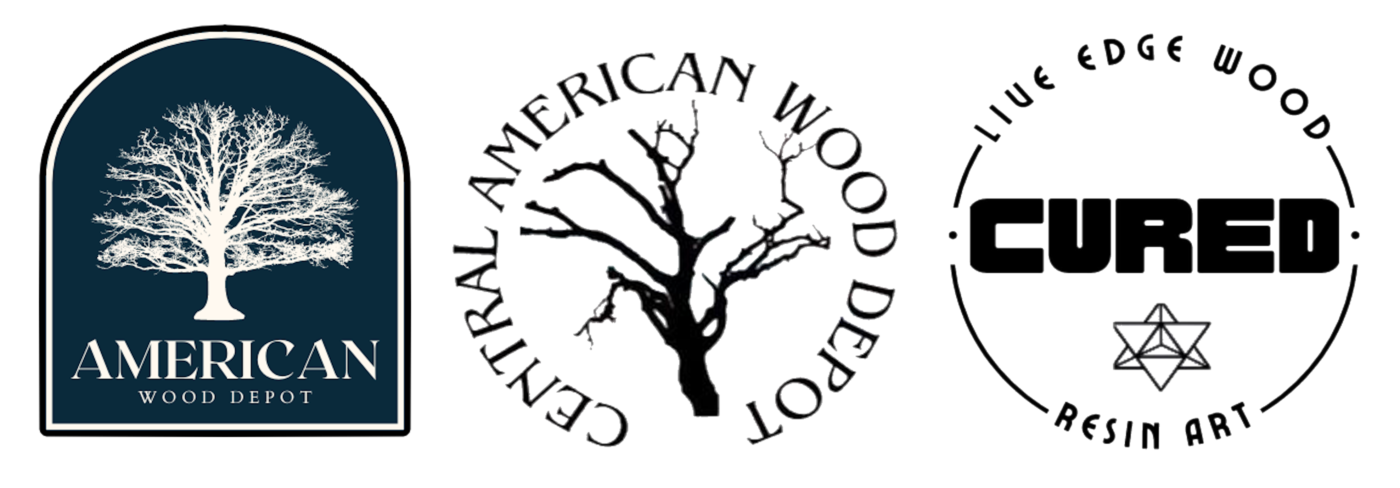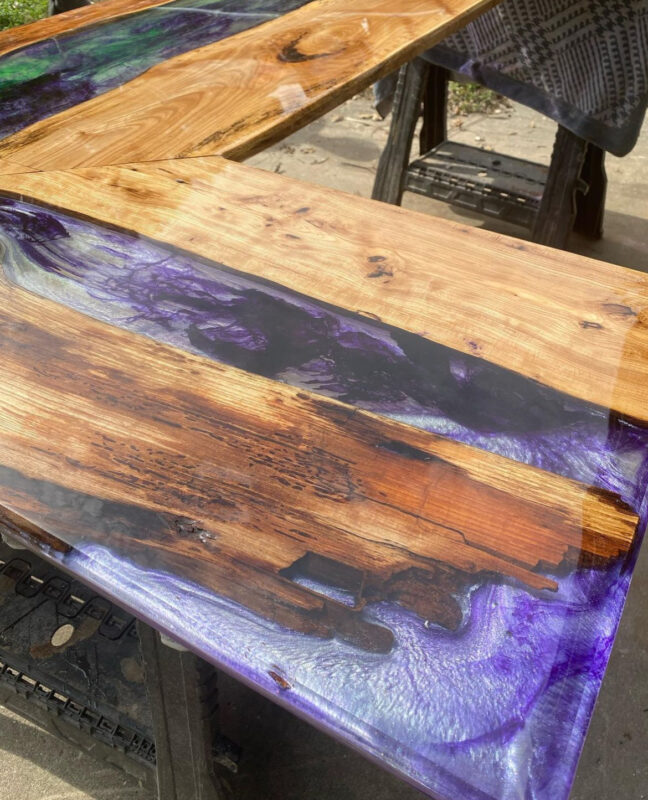Epoxy resin has become a popular material for a wide range of projects, from crafting and art to furniture making and industrial applications. However, not all epoxy resins are created equal. There are several types of epoxy resin, each with unique properties and ideal uses. In this article, we’ll explore the differences between art resin, table top epoxy, deep pour epoxy, and UV resin, helping you choose the right product for your project.
Art Resin
Overview
Art resin is specifically formulated for artistic applications. It is designed to be easy to work with and to provide a clear, glossy finish that enhances the colors and details of your artwork.
Key Characteristics
- Clarity: Art resin is highly transparent, making it ideal for projects where clarity is essential, such as paintings, photographs, and other artwork.
- UV Resistance: It often contains UV inhibitors to prevent yellowing over time, ensuring that your art retains its original appearance.
- Working Time: Art resin typically has a longer working time (also known as pot life), allowing artists to work at a comfortable pace and achieve intricate designs.
- Self-Leveling: It is self-leveling, which helps create a smooth, even surface without manual intervention.
Ideal Uses
- Coating artwork such as paintings, photographs, and mixed media pieces.
- Creating jewelry, coasters, and other small decorative items.
- Encapsulating objects in clear resin.
Table Top Epoxy
Overview
Table top epoxy is designed for creating durable, glossy surfaces on furniture and other flat surfaces. It is commonly used for bar tops, countertops, and tables, providing a hard-wearing finish that is resistant to scratches and stains.
Key Characteristics
- Durability: Table top epoxy is formulated to be tough and resistant to wear, making it suitable for high-traffic areas.
- Thickness: It can be applied in thicker layers than art resin, typically up to 1/4 inch per pour.
- Heat Resistance: Many table top epoxies are heat-resistant, making them suitable for surfaces that may come into contact with hot objects.
- Self-Leveling: Like art resin, table top epoxy is self-leveling, ensuring a smooth, even finish.
Ideal Uses
- Coating bar tops, countertops, and tabletops.
- Creating resin inlay designs in furniture.
- Sealing and protecting wood surfaces.
Deep Pour Epoxy
Overview
Deep pour epoxy, also known as casting resin, is formulated for applications that require thick pours, such as river tables and large castings. It has a lower viscosity and a longer curing time, allowing it to be poured in depths of up to several inches without overheating or cracking.
Key Characteristics
- Low Viscosity: Deep pour epoxy has a thinner consistency, enabling it to flow easily and fill molds and crevices.
- Extended Working Time: It has a much longer working time, which is crucial for deep pours to allow air bubbles to escape and for the resin to settle evenly.
- Curing Time: Deep pour epoxy has a slower curing time, often taking several days to fully harden, which helps prevent excessive heat buildup and shrinkage.
- Clarity: It maintains excellent clarity even in thick layers, making it ideal for creating transparent or colored castings.
Ideal Uses
- Creating river tables and other thick, poured resin furniture pieces.
- Large castings and sculptures.
- Filling large voids in wood slabs and other materials.
UV Resin
Overview
UV resin is a fast-curing resin that hardens when exposed to ultraviolet (UV) light. It is often used for small projects and repairs where quick curing times are advantageous.
Key Characteristics
- Fast Curing: UV resin cures in minutes when exposed to a UV light source, making it ideal for quick projects and repairs.
- Convenience: It requires no mixing, as it is a single-component system. This simplifies the application process.
- Versatility: UV resin can be used for both coating and casting, though it is generally used for small, thin applications due to its curing method.
- Clarity: It cures to a crystal-clear finish, similar to other types of epoxy resin.
Ideal Uses
- Jewelry making and small crafts.
- Quick repairs on resin projects.
- Coating small surfaces and objects.
- Encapsulating small items.
Conclusion
Understanding the differences between art resin, table top epoxy, deep pour epoxy, and UV resin is crucial for selecting the right product for your project.
- Art Resin is perfect for artistic applications that require high clarity and a long working time.
- Table Top Epoxy is ideal for creating durable, glossy surfaces on furniture and countertops.
- Deep Pour Epoxy is best suited for thick pours and large castings, offering excellent clarity and low viscosity.
- UV Resin is great for small projects and repairs that require quick curing times.
By choosing the appropriate epoxy resin for your specific needs, you can achieve professional-quality results and bring your creative visions to life.

